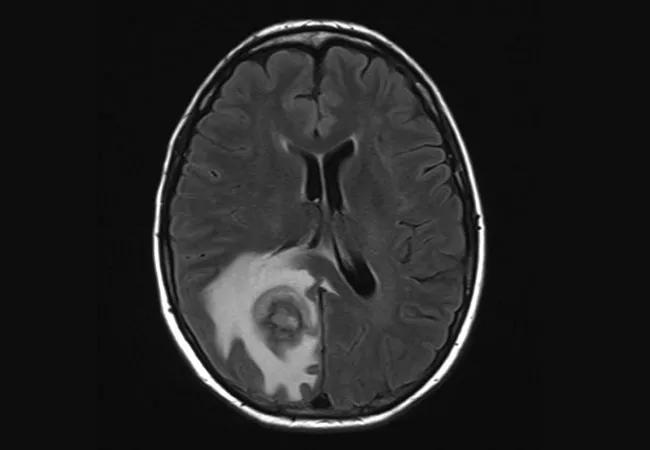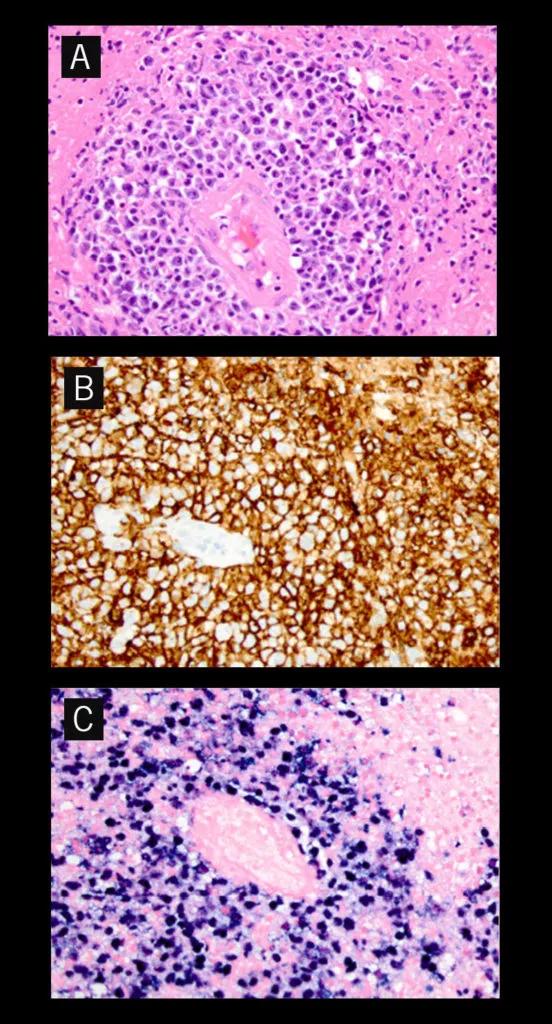Patients need close monitoring

By Soumya Chatterjee, MD, MS, FRCP
Advertisement
Cleveland Clinic is a non-profit academic medical center. Advertising on our site helps support our mission. We do not endorse non-Cleveland Clinic products or services. Policy
A 46-year-old woman presented to our rheumatology clinic with Raynaud phenomenon, sclerodactyly, rapidly progressive skin tightness, polyarthralgia with morning stiffness, proximal myopathy, dry eyes and mouth, and gastroesophageal reflux disease.
Laboratory testing showed positive antinuclear antibody and positive anti-RNA polymerase III antibody. Her anti-SS-A and anti-SS-B antibodies were negative. Her blood count, comprehensive metabolic panel and inflammatory markers were normal. A pulmonary function test and 2D echocardiogram were also normal.
Based on these findings, she was diagnosed with diffuse cutaneous systemic sclerosis (dcSSc) with secondary Sjögren syndrome.
Her modified Rodnan skin score (mRSS), a measure of skin tightness, was 17/51 at initial presentation and rapidly increased to 27/51 by eight months. She also developed severe pruritus and progressive joint contractures.
She was started on 2 grams daily of mycophenolate mofetil (MMF), which effectively slows down progressive skin tightness in dcSSc. MMF has become the first-line immunosuppressive therapy for interstitial lung disease (ILD) in scleroderma and also the first-line therapy used by many scleroderma experts to treat diffuse and rapidly increasing skin tightness in dcSSc.
After eight months of treatment, she had an mRSS of 8/51, a remarkable regression. Her widespread skin tightness diminished from her face, extremities and trunk, to just her fingers. In addition, her joint pains, contractures, proximal myopathy, pruritus, and fatigue improved substantially.
Advertisement
We advised her to continue MMF 2,000 mg daily to maintain her improved mRSS. In addition, her Raynaud phenomenon was well controlled on amlodipine 2.5 mg daily; she took omeprazole for acid reflux disease and pilocarpine tablets for her dry mouth.
For five years, the patient’s condition was stable. She then developed intermittent right-sided headaches similar to her previous migraines. She soon presented to her local emergency room with an onset of neurological symptoms: more severe headaches, nausea, vomiting, gait instability, lightheadedness, blurry vision (worse on leftward gaze) and word-finding difficulty. Physical examination showed left homonymous hemianopia.
She underwent an MRI of her brain (image at top), revealing a single 2.4-cm peripherally enhancing right parietal lobe lesion with centrally restricted diffusion and significant adjacent vasogenic edema with local mass effect. Chest CT showed a few indeterminate sub-centimeter pulmonary nodules and mild interstitial fibrosis. CT of the abdomen and chest was normal.
A biopsy of the right parietal lobe mass was performed and confirmed a diagnosis of diffuse large B-cell lymphoma associated with Epstein-Barr virus (EBV) (Figure). As a result, her MMF treatment was discontinued.

Figure. (A) Hematoxylin and eosin stain shows atypical perivascular cells; (B) the atypical perivascular cells are positive for CD20 by immunohistochemistry; (C) the atypical perivascular cells are EBER-CISH (chromogenic in situ hybridization for EBV-encoded RNA)-positive. Reproduced from Chatterjee et al., Joint Bone Spine.2020:87:163-166. Copyright © 2020 Elsevier Masson SAS. All rights reserved.
Advertisement
The patient received four cycles of chemotherapy with high-dose methotrexate and rituximab. She tolerated the treatment well. Other than persistent homonymous hemianopia and mild fatigue, she currently feels well.
This is the first report of EBV-associated primary central nervous system lymphoma (ePCNSL) in a dcSSc patient receiving long-term MMF treatment. ePCNSL has been increasingly reported in patients receiving immunosuppressive agents following organ transplants or for autoimmune diseases. In addition to MMF, other immunosuppressive agents associated with development of ePCNSL include methotrexate, azathioprine and cyclophosphamide.
This case raises concerns about the safety of MMF. A safe dose and duration of long-term therapy with MMF are unknown. In the ePCNSL cases reported so far, the duration of MMF treatment ranged from one to five years. At the rheumatology clinic, we are vigilant in monitoring patients on long-term MMF for signs of ePCNSL, including focal and nonfocal neurological deficits, so that they can be recognized and treated promptly to prevent permanent neurological deficits. We also consider stopping MMF after three to four years of continuous treatment if no additional benefit is anticipated.
This case was initially reported in Joint Bone Spine (2020;87:163-166).
Image at top is reproduced from Chatterjee et al., Joint Bone Spine. 2020:87:163-166. Copyright © 2020 Elsevier Masson SAS. All rights reserved.
Dr. Chatterjee directs the Scleroderma Program in Cleveland Clinic’s Department of Rheumatic and Immunologic Diseases.
Advertisement
Advertisement

Summit broadens understanding of new therapies and disease management

Program empowers users with PsA to take charge of their mental well being

Nitric oxide plays a key role in vascular physiology

CAR T-cell therapy may offer reason for optimism that those with SLE can experience improvement in quality of life.

Unraveling the TNFA receptor 2/dendritic cell axis

Nasal bridge inflammation, ear swelling and neck stiffness narrow the differential diagnosis

Genetic testing at Cleveland Clinic provided patient with an updated diagnosis

Proactive bone-health management may reduce morbidity and mortality